India – a land of diverse ethnicity and myriad landscapes represents a truly remarkable country. The cultural and geographical significance of each region portrays the rich tradition our country is blessed with. When it comes to travel & adventure, the country hosts a plethora of stunning destinations. One such is the spectacular Himalayan mountain range. Though the Himalayas extend across five countries, the Indian Himalayan Range is among the majestic terrains. The Indian Himalayan Range spans across ten Indian states – Jammu & Kashmir, Himachal Pradesh, Uttarakhand, Meghalaya, Nagaland, Manipur, Mizoram, Tripura, Sikkim and Arunachal Pradesh.
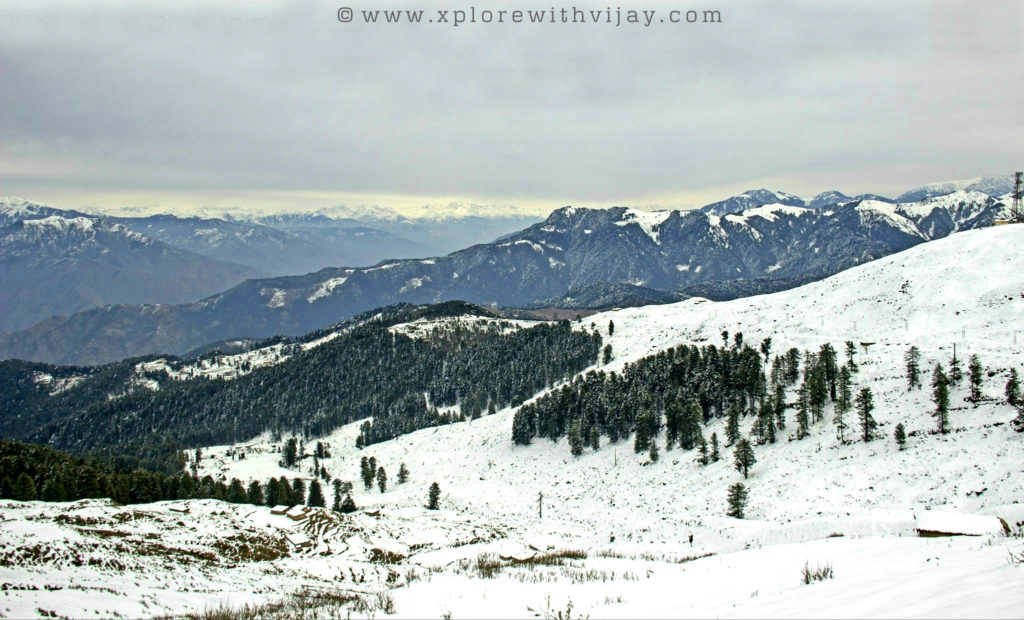
And, here comes a fascinating narration of my travel experience to the foothills of these majestic mountains, popularly called Shivalik hills in the Indian state of Jammu & Kashmir. Arguably, the most beautiful of all the valleys in the Himayalas are in the Indian state of Jammu & Kashmir. About 100 km from Jammu, en route Udhampur to Srinagar, begin the mesmerizing views of Shivalik hills. Average altitude of these hills range between 5000 to 6000 feet and are considered the foothills of Himalayas.
Why did I pick this destination?
Over the years, I have traveled extensively across the length and width of our beautiful country. The experience of stepping foot on snow is undoubtedly exciting and is satisfying to have that felt in each of my treks. However, there’s a difference between snow and snowfall and I wanted to experience the latter. Most people tend to interrelate these two dissimilar yet soundalike phenomenons. So, let’s understand the differences.
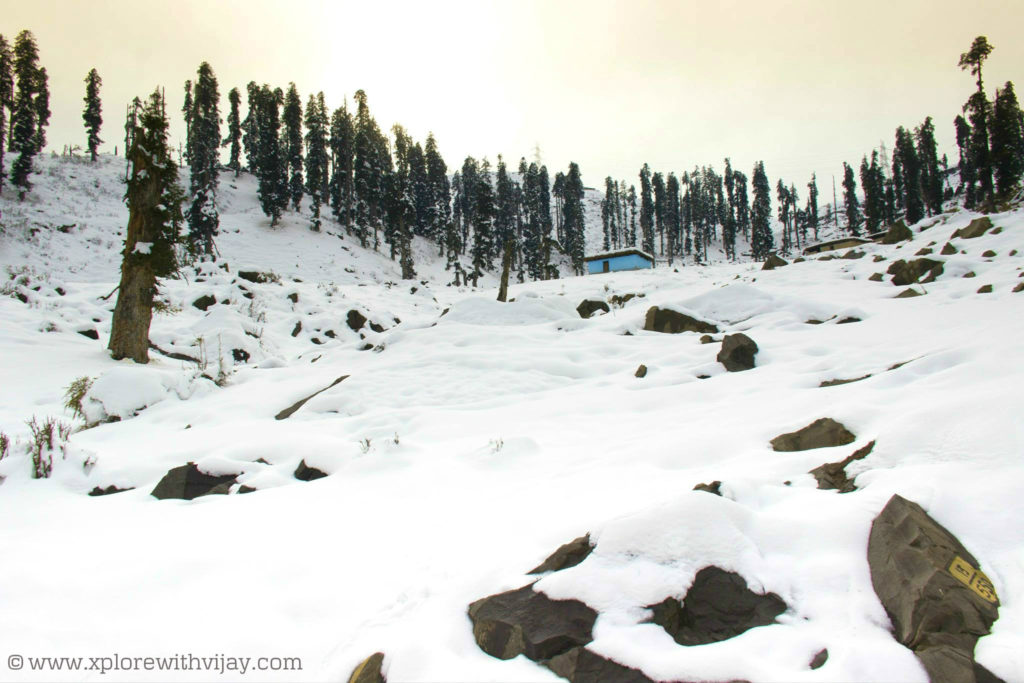
Snow is, typically, anything that’s formed with ice crystals taking shape at altitudes of above 6,000 feet. Depending on the serenity of the location, these ice crystals can either be seen as solid snow, drifted snow and muddy laden murky snow. In contrary, a snowfall refers to precipitation of crystalline water. Typical conducive parameters include a moist atmosphere with temperatures hovering around and below 5 degrees Celsius. Snowfall occurs all around the year at altitudes beyond 15,000 feet. At most other places, in the remote Himalayan settlements above 6000 feet, snowfall occurs from December to February. And, in some rare cases extending up to April.
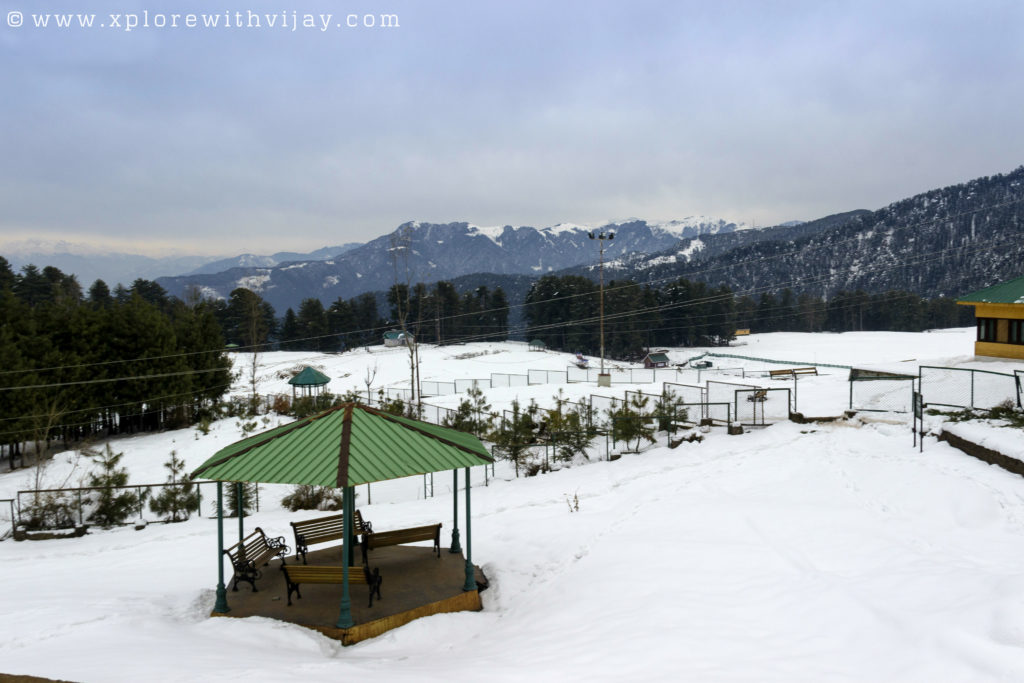
Unfolding of Travel Plans:
There was excitement building up for yet another Himalayan adventure. A brief discussion with a friend of mine and we, almost instantly, agreed to travel to one of the most beautiful destinations on planet earth – Jammu! Just a fortnight before our journey, travel essentials were picked up from an adventure store and we were eagerly awaiting for the calendar dates to turn over!
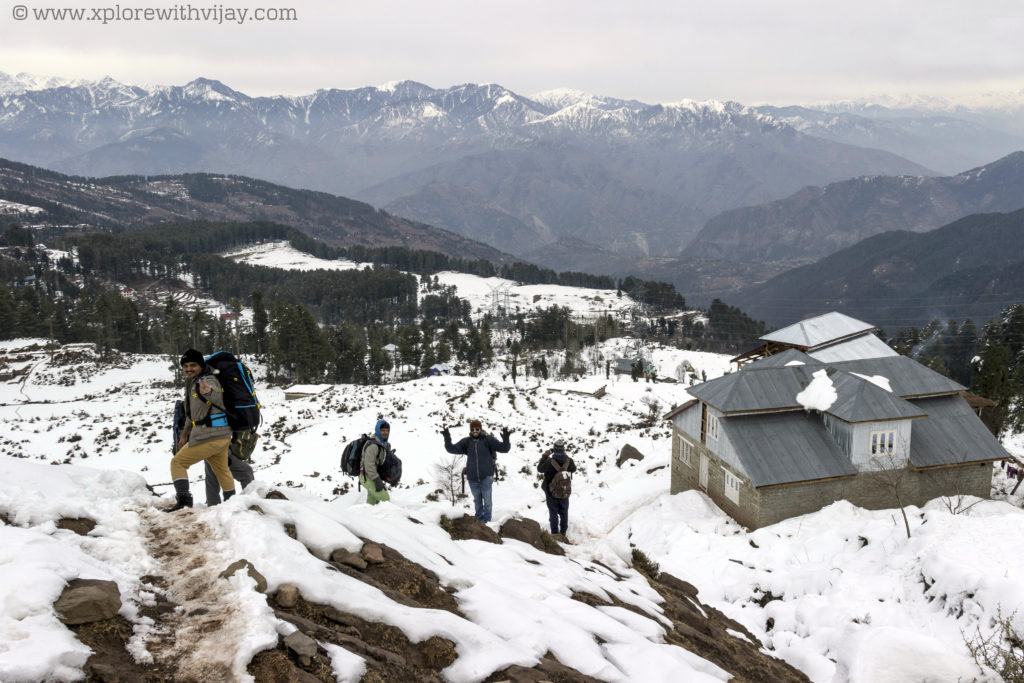
Voila!’ There we go!
A new year had just rolled in and what else could be a better way to begin a new year than to execute your travel plans? The most awaited day had arrived! It was a foggy winter morning in Chennai and the city was engulfed with thick layers of smog. While the entire city was celebrating the festivities of Bhoghi and Pongal, I was pepped up with my travel plans. A four hour journey landed me to the capital city of New Delhi and the atmospheric conditions were no different either, The visibility was down to about a kilometer, due to the rampant air pollution. Nevertheless, my friend and I met at one of the airports, exchanged pleasantries and moved over to a railway station that connects Jammu with Delhi. An overnight journey brought us closer to dreams of the wonderland we wanted to experience. The temperatures at Jammu Railway Station were down to about 5 degrees Celsius picking up severe cold waves. A hot cup of chai provided the much needed comfort for a brief moment.
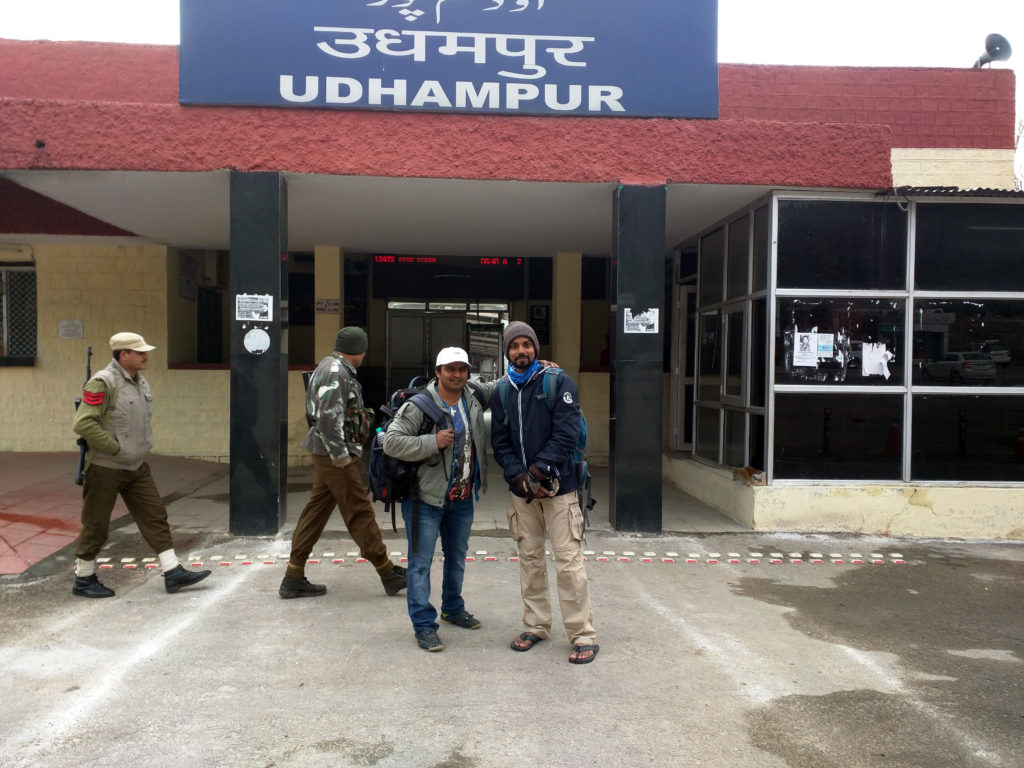
We, then, boarded a DEMU train bound to Udhampur. Udampur is the second largest city of Jammu. A journey of about an hour takes you through the several scenic views and stunning engineering marvels of the likes of incredible tunnels. We were not done with our travel yet. At Udhampur, we hired shared taxi service to reach our destination – Sanasar. Sanasar is a small remote scenic village en route Srinagar. Sar, in most Himalayan settlements, refers to a lake. Sana is a name given to another village. These two villages are collectively called Sanasar.
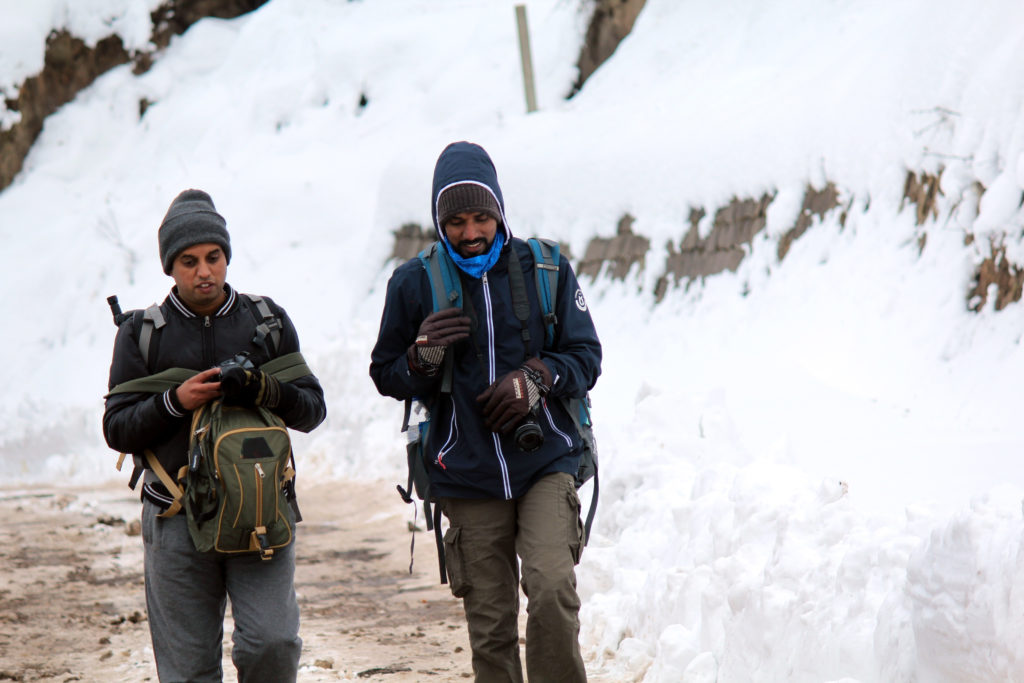
We dropped off at a place called Patnitop, a scenic hill station. Our trek guide received us and thus began our trek to the camping site. For having traveled more than a day followed by a 5 km uphill trek was certainly demanding. However, with snow clad mountains at a distance, heaps of snow on either side of trek path, experiencing warmth within and cold outside, the physical discomfort soon vanished off. We maintained a leisure pace relishing the enchanting visuals.
Exhilaration and Bliss:
It was a sigh of relief when we arrived at our campsite. The camp was amidst heaps of drifted snow surrounded by majestic mountains. By the time, we made it to our campsite, it was 5 in the evening. A hot cup of chai and pakodas not only tasted lip smacking but, also, offered us the bodily warmth. The rest of the time went in picking up a chat and spending time by the firewood stove. The severe cold all around and the warmth from the wood burning stove was an experience of its kind. That was so comforting.
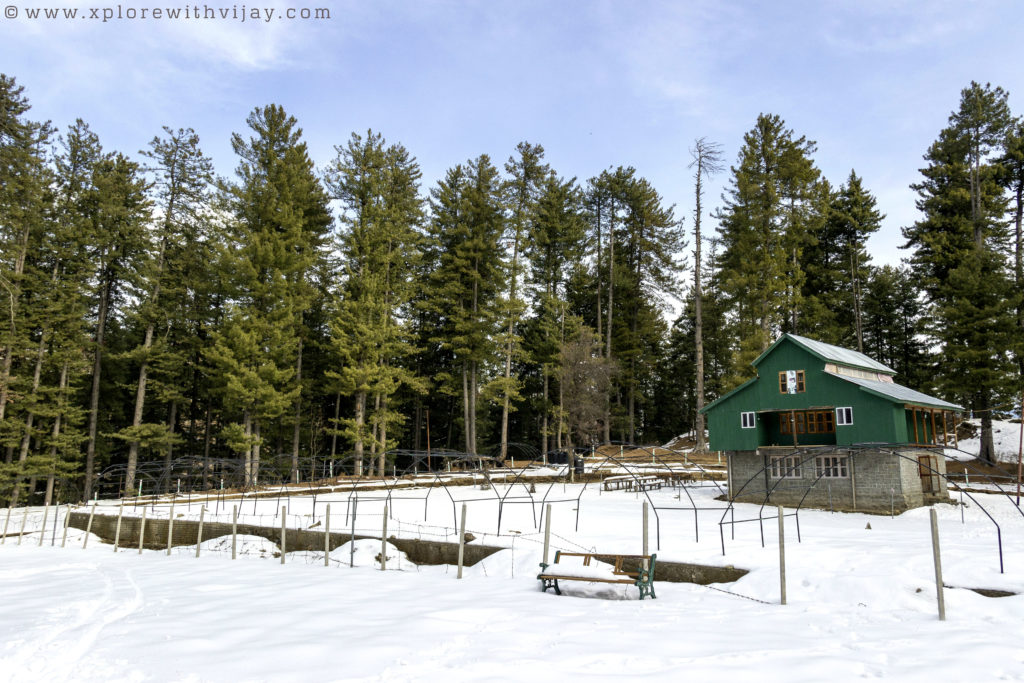
Just when we were about to turn off the lamps for the day, we were taken by surprise. The sounds of snowfall on the roof of the camp was as gripping and exciting as the captivating visuals outside. In no time, we got off our camp to experience and relish the spectacular show of this natural phenomenon – snowfall!
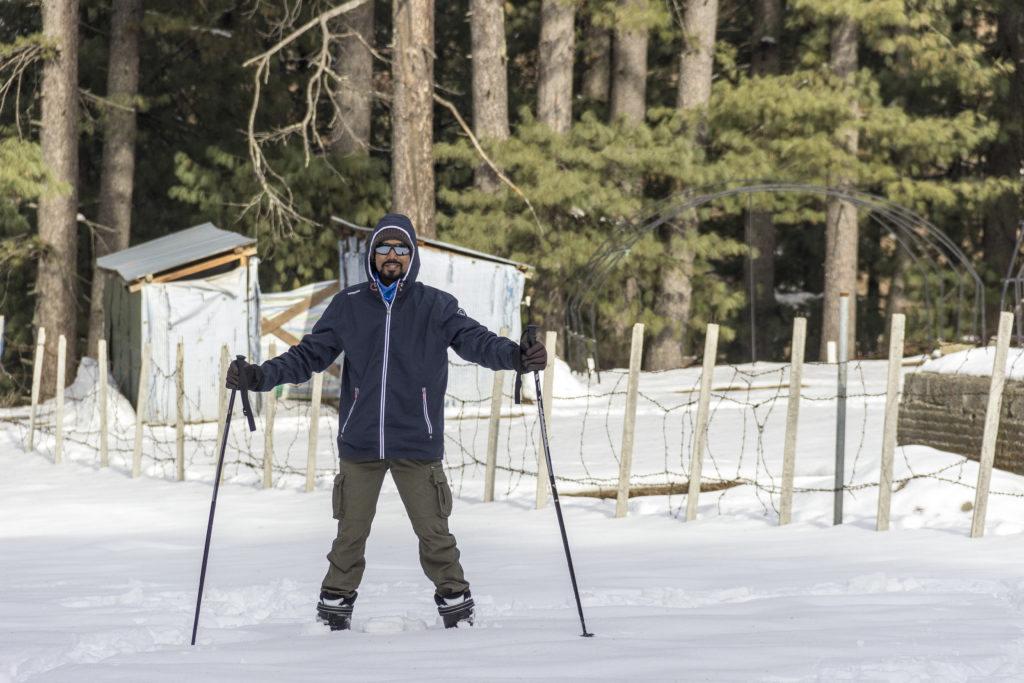
The next morning, we woke up to a surreal landscape filled with pure crystal white drifted snow. An overnight snowfall accumulated heaps of snow all around and as we stepped over the huge pile up of snow, we were under knee deep snow. That was such an enthralling experience. And, while the snow was lay piled up all around, we tried our luck with skiing. We were briefed about the etiquette of maneuvering with specialized snow boots and skiing equipment. A good hour and a half was as exciting and compelling as the stunning views. However, it takes time and practice to manage the art of skiing. Nevertheless, it was an enchanting attempt.
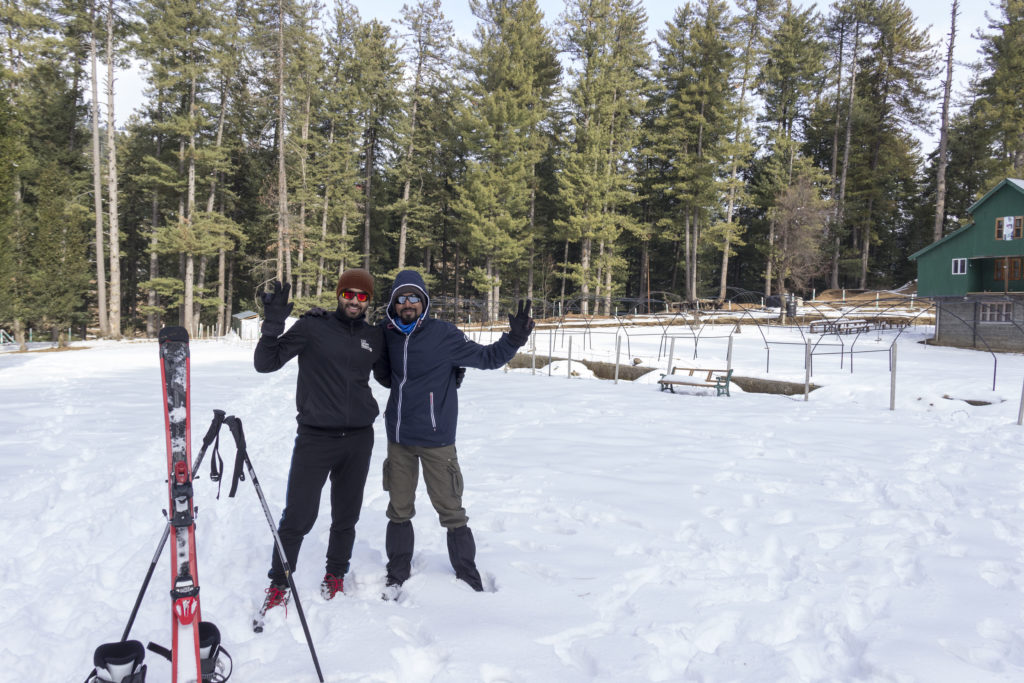
Surrounded by magnificent Himalayan ranges, is a lake that freezes by the winters. The top layer of the lake becomes hard enough to perform daredevils acts of walking over the frozen waters. We had other ideas, though. A zip line that extends to about 300 meters over the lake was an audacious takeover. That was a hair-raising experience. With a heightened state of excitement, we headed to a place of worship, that we were told is a very powerful temple. The locals said it’s a wish granting powerful temple that has existed since ages. With the calm ambiance and surrounded by positive energies of this powerful place of worship, we were in a better sense of self being. With an apparent drop in energy levels, it was a seemingly arduous trek back to campsite.
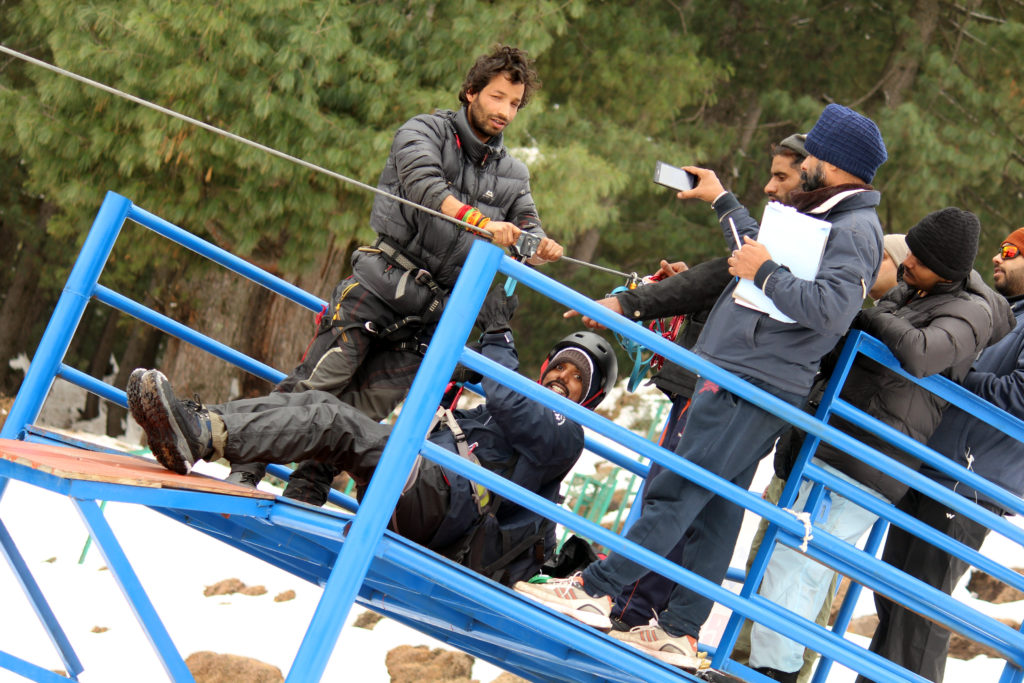
Melancholy and Elation:
What followed at the campsite was a delicious lunch and lively conversations back again. Later that evening, the weather was beginning to get worse. What started off as a mild snowfall took shape of an enormous and severe activity. Within minutes, the entire valley was under severe grip of tremendous snowfall.
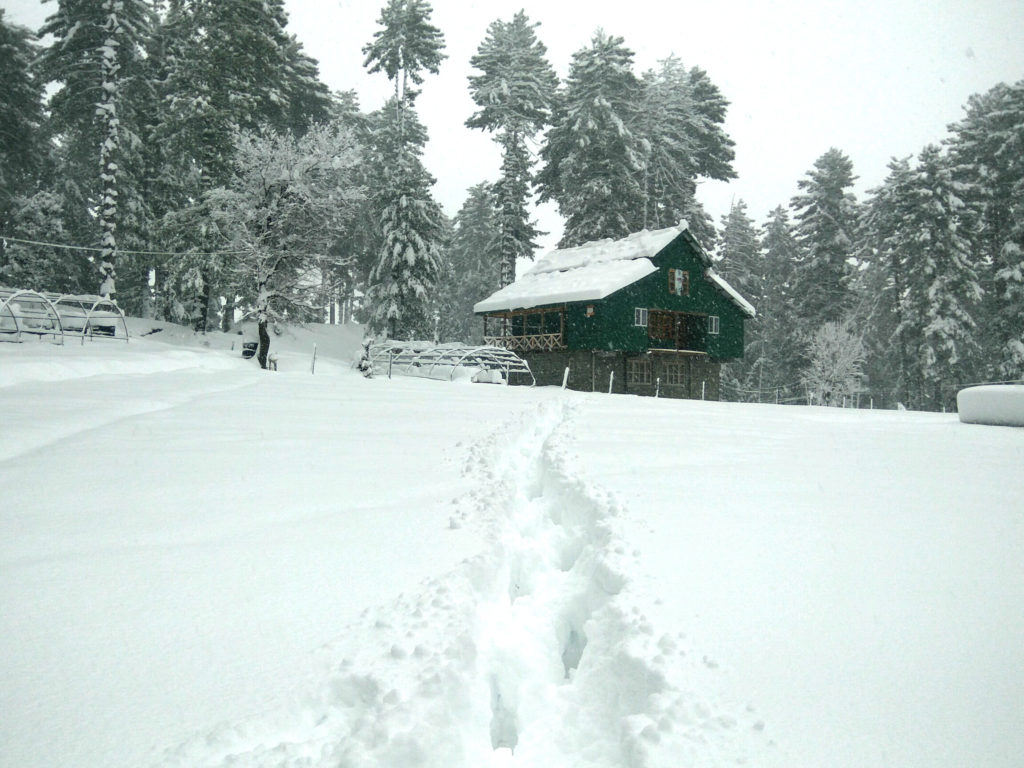
With sub zero temperatures and restrictions in and around campsite, all that we could do was to feel the warmth by the wood burning stove and enjoy the snowfall. Heavy overnight snowfall heavily restricted movement of vehicles around the valley. Luckily, there are camps put up by the Indian army that keep clearing off snow on the major roads leading to important military bases. The Border Roads Organization (BRO) does a fantastic job of working round the clock to keep these important roadways clear of any obstacles thereby keeping the several valleys connected to each other.
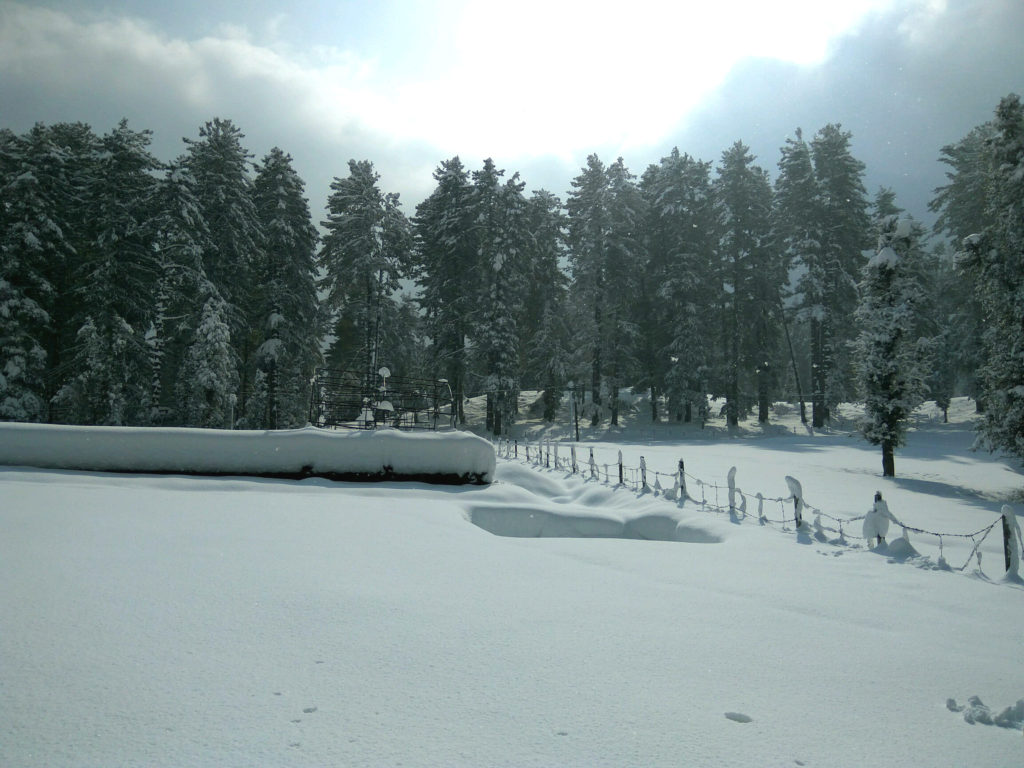
It was time for us to bid goodbye to the wonderful staff at the campsite and with the instructions of our guide we stepped out to the serene beauty of severe snowfall around the valley. Our trek downhill to the National Highway 1 was a tremendously treacherous physical task. It was snow all around only the trained locals could determine if the path ahead is safe for walking. Our guide, Mr. Murad ali, was an excellent and humble human, and all that we had to do was to follow his foot steps. We were mid way down, and human settlements started appearing. It was fascinating to see people removing blocks of snow from the roof of their home.
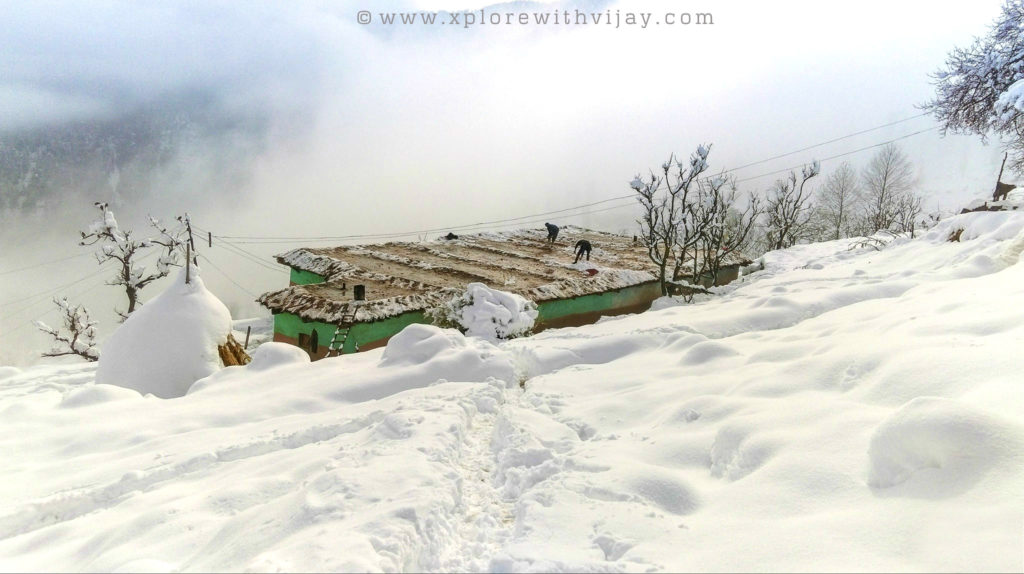
A four hour trek came to a halt and there was sigh of relief when we arrived at a place called Nashri. We had, now, reached the National Highway 1 that connects Jammu with Kashmir. At the time of this trek, a tunnel was being constructed that would significantly reduce the travelling time from Jammu to Kashmir and vice-versa. A little over 9 km, this is the country’s longest tunnel with added features like fully integrated tunnel control system and an all-weather tunnel bypassing snowfall and avalanche-prone areas of Patnitop, Kud and Batote.
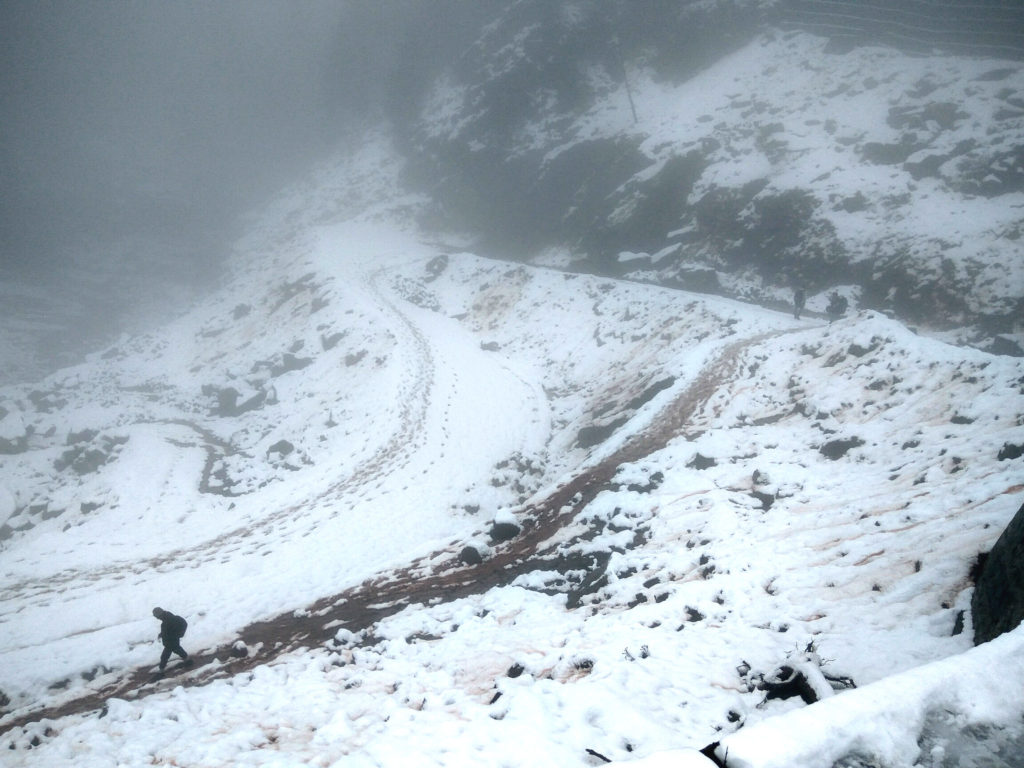
Exhaustion and Desperation:
We were stranded on the highway and it was not before reaching Batote, a distance of about 12 km, that we can look for some decent hotels or can hire a vehicle. Leg muscles were crying for attention and the shoes were severely drenched and laden with slush and dirt all over. The energy levels were down but a vehement intensity to get to a hotel before the nightfall kept us going.
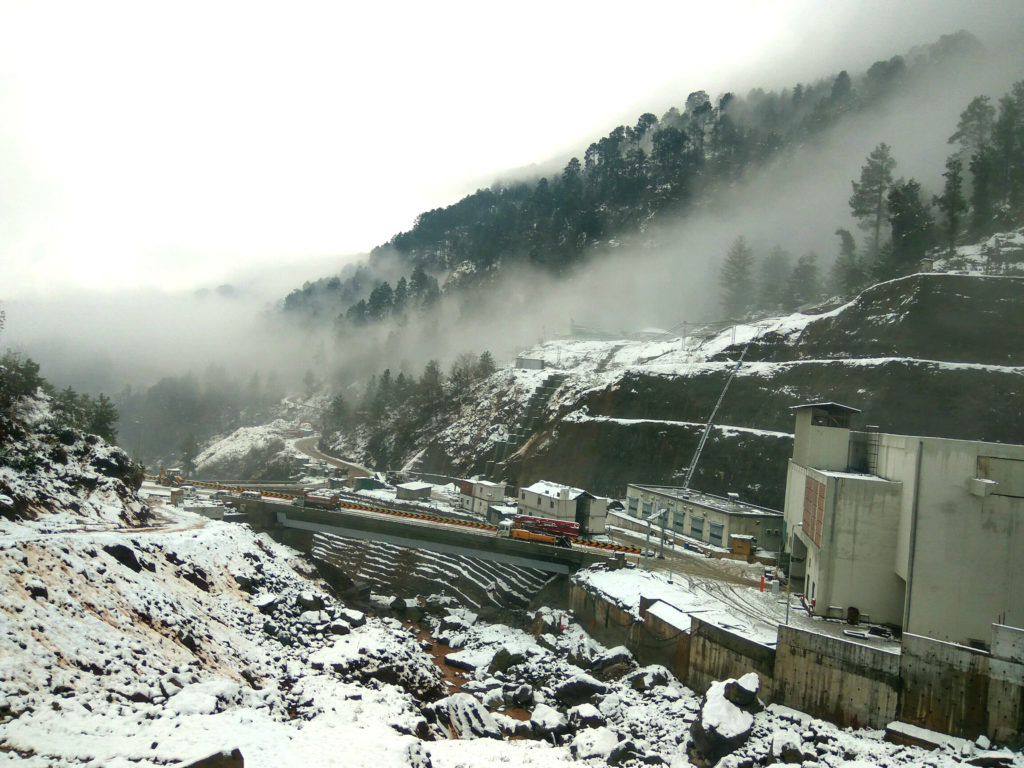
After a long walk along the highway, we reached this place called Batote and here was our next challenge. The place wasn’t appearing to be safe for a night stay and we were on the look out for a vehicle that would take us to the city of Udampur. Sadly, we couldn’t find any transportation option. There were restrictions on the vehicular movement from this part of the state to the Jammu and so were they reluctant. We were luck enough to have got a shuttle service that would drop us midway to Patnitop. It was getting dark by the time we reached Patnitop.
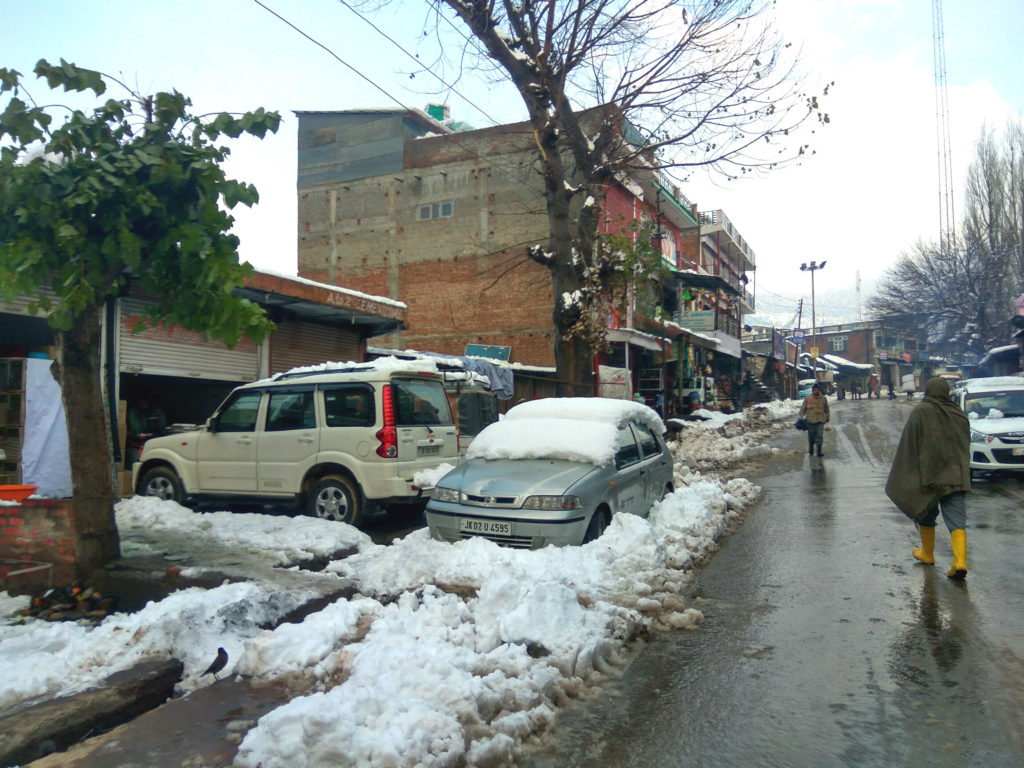
We were lucky, again, to have got a taxi that would take us to the city. A three hour long drive along the curves of the valley was extremely tiring. We were third time lucky to get into a hotel for a night stay. The mobile phones started picking up reception, indicating the end of a splendid time spent around the mountains and hills of the magnificent Himalayan terrains – The Shivalik hills.
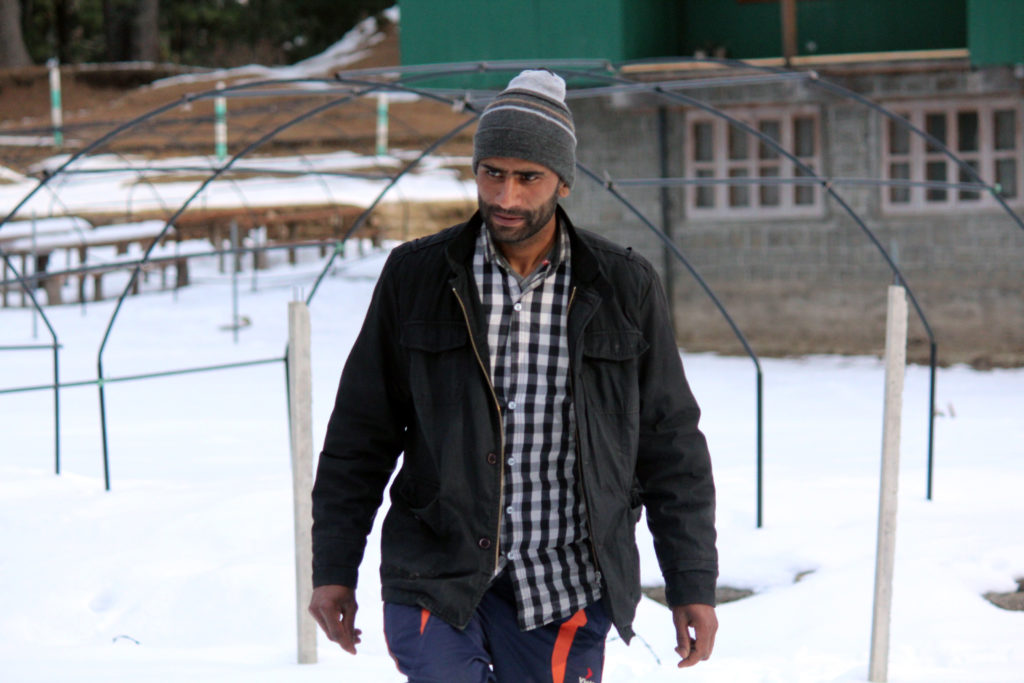
Resources:
How did I Travel?
If you have scanned through my other blogs, you could probably interpret the way I would have planned my travel. Nevertheless, I am a rail fanatic guy. I am exceedingly obsessive about train travel and I always look for an opportunity. Here’s how I planned my travel:
Onward Journey:
- Chennai to New Delhi by Indigo air
- New Delhi to Jammu on board Jammu Tawi Express
- Jammu to Udampur on board DEMU to Udhampur
- Udhampur to Patnitop by shared taxi
- Patnitop to campsite by trek
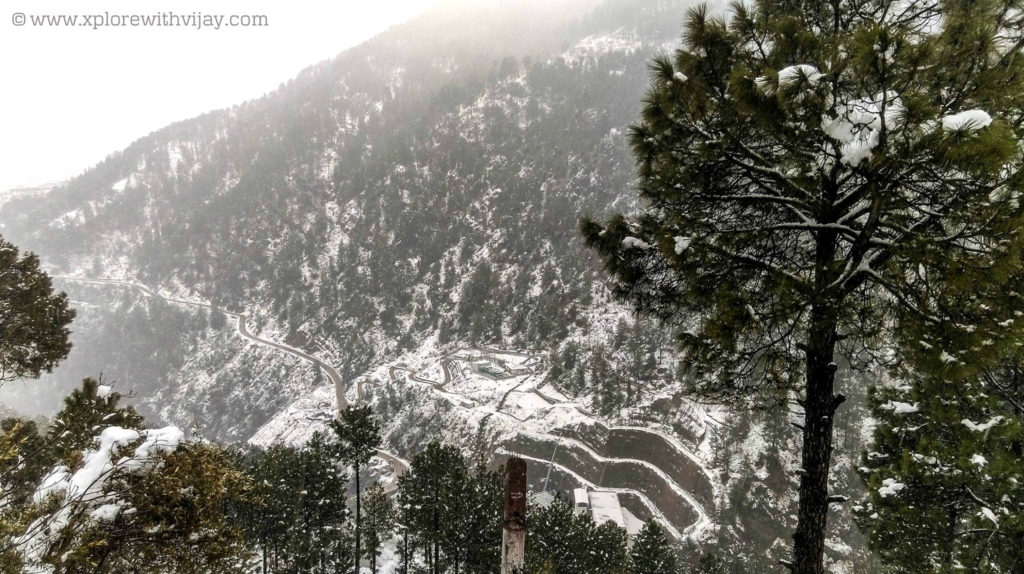
Return Journey:
- Campsite to Batote by trek
- Batote to Patnitop by tuk-tuk
- Patinitop to Udhampur by taxi
- Udhampur to Jammu on board DEMU to Jammu
- Jammu to New Delhi by train
- New Delhi to Chennai on board Chennai Rajdhani
Mobile Connectivity:
Make sure you carry a postpaid SIM, specifically from BSNL. Prepaid cards issued outside of the state of Jammu and Kashmir are not operational. Predominantly, BSNL and Aircel are the only networks available here. However, while on the highway your mobile phone is just a piece of entertainment device. The mobile networks may or may not always be available.
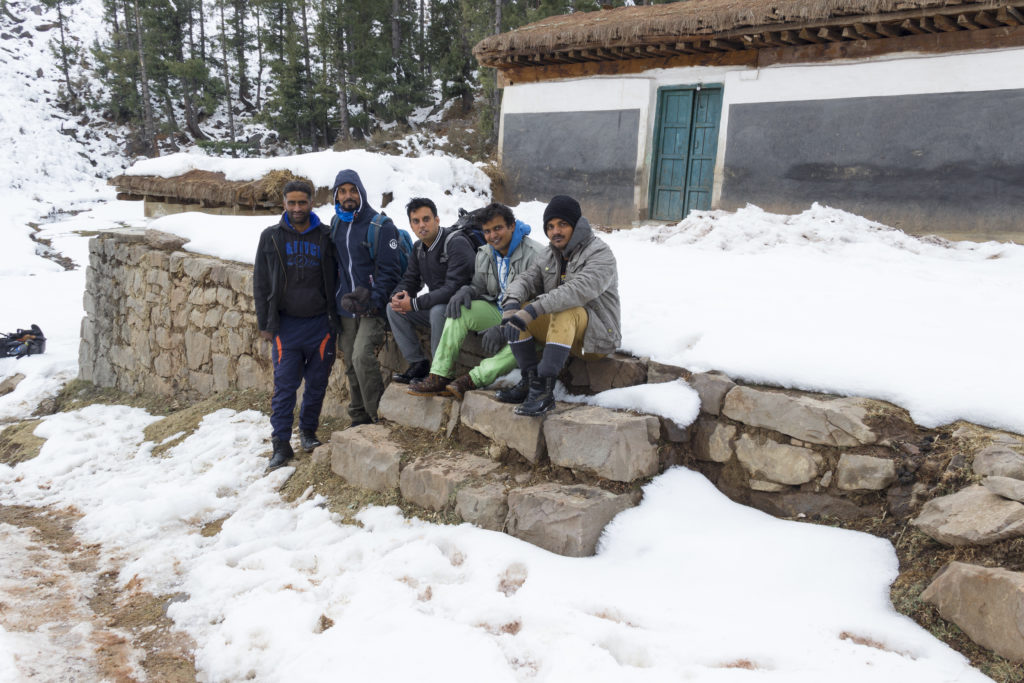
Best time to visit:
At an altitude of about 6,700 feet, Sanasar is a delight not just for the trekkers alike, but for the nature lovers. Although, this destination is open throughout the year, but it’s best experienced from January to February. This is one of those treks that will make you feel mesmerized at every level of trek right from the start to the end.
I hope, someday, this information may be beneficial for you to plan a trip to Jammu.
Here’s a fascinating preview vlog of this journey! A full version will be out soon!
Let me know if you liked this blog in the comments section below.
Feel free to share this blog with friends. Hit any of those social media icons to share this blog!
And, do subscribe to my travel blogs, so you don’t miss out on fascinating travel stories.

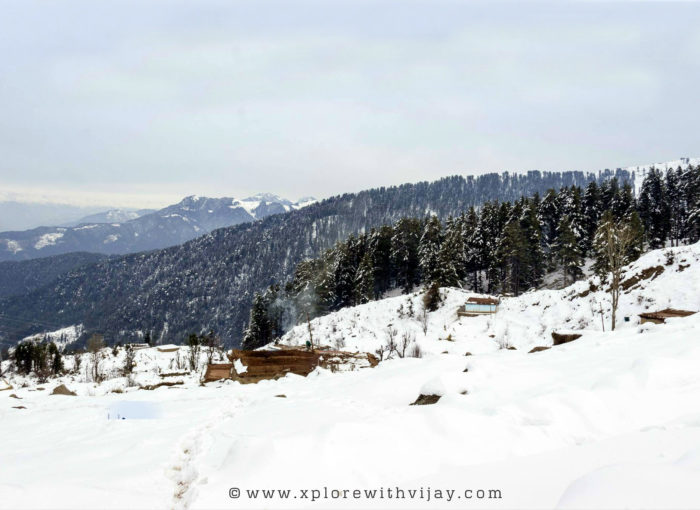
It’s fascinating to even read bro! I can’t imagine how awesome it would have been. Hoping to join you for a future adventure someday 🙂
Thanks a lot, Mohamed! Any day! 🙂